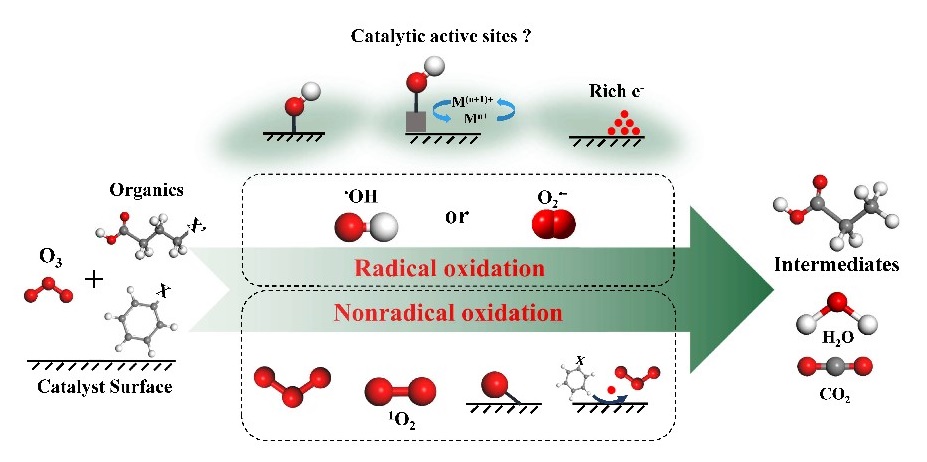Heterogeneous catalytic ozonation (HCO) process has been widely studied for water purification. Researchers from the Institute of Process Engineering (IPE) of the Chinese Academy of Sciences and China University of Petroleum (Beijing) reviewed the mechanisms of HCO and provided a systematic and state-of-art analysis of this area. This work was published in Environmental Science & Technology (DOI: https://doi.org/10.1021/acs.est.0c00575).
Although typical reaction mechanisms have been established for HCO, some of them are only appropriate for specific systems. The divergence and deficiency in mechanisms hinder the development of novel active catalysts.
"We compared the various existing mechanisms and categorized the catalytic oxidation of HCO into radical-based oxidation and nonradical oxidation processes with an in-depth discussion, trying to clarify some possibly wrong conclusions and guide the mechanism study," said XIE Yongbing from IPE.
In the past few years, Prof. XIE Yongbing, Prof. CAO Hongbin from IPE and their collaborator synthesized a series of catalysts for HCO, including manganese oxides based materials, carbon based materials and composite materials.
Combing intensive characterization of material structure, surface functional groups and catalytic activity, they proposed a new pathway of O3 decomposition and possible active sites. The developed heterogeneous catalyst and the integrated technology have been applied in 18 practical projects of industrial wastewater treatment.
The catalytic active sites and adsorption behaviors of ozone molecules on the catalyst surface are the key clues for further elucidating the O3 activation processes, evolution of reactive oxygen species (ROS) and organics oxidation pathways.
Researchers discussed several types of active sites and the interaction with ozone molecules.
Moreover, the researchers reviewed different detection methods of the ROS produced in both types of oxidations and their roles in the destruction of organics, and pointed out some specific problems during ROS analysis, including the scavenger selection, experiment results analysis, and some questionable conclusions obtained in previous studies.
They also proposed alternative strategies for the systematic investigation of the HCO mechanism, DFT calculation and in-situ EPR analysis, based on their previous studies.
"We believe that this review could provide critical insights for future advancements in catalyst design and mechanistic studies of HCO systems," said XIE.

The radical and non-radical reaction pathways and the reactive species in heterogeneous catalytic ozonation of organic pollutants (Image by XIE Yongbing)
Media Contact:
LI Xiangyu
Public Information Officer
Institute of Process Engineering, Chinese Academy of Sciences, Beijing 100190, P. R. China.
E-mail: xiangyuli@ipe.ac.cn
Tel: 86-10-82544826
 Search
Search




 京公网安备110402500047号
京公网安备110402500047号